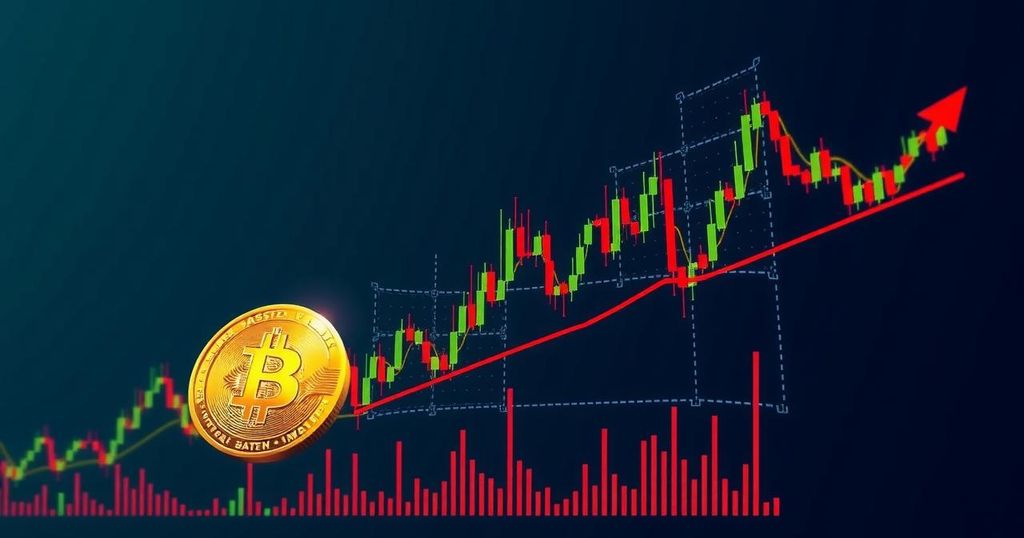Bitcoin Price Corrections Amid Optimism in Derivatives Markets
Bitcoin’s price has retraced from its recent high of $69,367; however, the derivatives market reveals sustained trader optimism regarding a price recovery. Indicators of low leverage suggest a healthy market environment amid recent economic pressures and earnings reports. Key upcoming events may continue to influence market dynamics.
Bitcoin experienced a slight decline from its recent high of $69,367, after witnessing a rally towards its all-time peak on October 29. However, the derivatives market remains optimistic regarding a potential price recovery. Analysis of both Bitcoin futures and options indicates that positions are being held without excessive leverage, a critical factor for establishing a sustainable upward trend toward new record highs. It is essential to note the causes underlying Bitcoin’s recent price drop to below $69,000 on November 1. When traders perceive an impending decline in Bitcoin prices, the 25% delta skew metric typically rises above 7%, highlighting premium pricing on put options due to increased demand. Despite the pullback in Bitcoin’s price, the derivatives market appears stable. Examination of the funding rate for perpetual contracts—essentially an indicator of investor sentiment—reveals a neutral stance, with no significant costs associated for bullish leverage. On November 1, the rate remained steady at 0.01% per eight hours, or approximately 0.9% monthly, signaling a balanced outlook. This suggests that leverage was not a driving force in Bitcoin’s previous ascent from $67,000 to $73,500 between October 27 and 29, reflecting a robust market dynamic. Overall, the Bitcoin derivatives market supports a potential sustained bull market trajectory, which may lead to additional gains. In considering broader market influences, Bitcoin’s recovery to $71,000 on November 1 correlates closely with fluctuations in the S&P 500 index, indicating that both are responsive to similar macroeconomic factors. Given current recession risks, traders often favor cash and Treasury bills, which may elucidate the recent downturns in both stock and cryptocurrency markets following Intel’s announcement of a 6% revenue drop year over year. Furthermore, recent earnings reports from technology firms such as Microsoft and Meta have showcased increased investments in AI, resulting in tempered expectations for earnings growth overall. Contributing to market anxiety were events such as the steep 44% decrease in Super Micro Computer (SMCI) stock following an unexpected auditor resignation. The market sentiment shifted on November 1 after the U.S. Bureau of Labor Statistics reported a modest payroll increase of only 12,000 for October, well below the forecasted 100,000, along with a 0.4% rise in wages, raising inflation concerns. However, future monetary policy adjustments are anticipated, as market analysts, using the CME FedWatch tool, predict a 0.25% interest rate cut by the Federal Reserve on November 7. Political events such as the U.S. presidential elections on November 5 and the Federal Open Market Committee (FOMC) meeting are noteworthy, as governmental efforts to stimulate the economy may lead to a depreciation of the U.S. dollar, potentially benefiting Bitcoin in the longer term.
This analysis discusses recent trends in Bitcoin’s price and the performance of its derivatives markets. Despite a recent decline in price following a rally, the derivatives market suggests sustained optimism among traders. The examination of leverage, funding rates, and correlations with macroeconomic indicators provides insights into potential market dynamics, alongside recent performances in the technology sector and political events that could influence Bitcoin’s future movements.
In conclusion, while Bitcoin has seen a recent price pullback from its highs, the derivatives market remains optimistic with stable sentiment and low leverage indicators. As traders navigate macroeconomic indicators and political events, a cautious yet hopeful outlook persists for Bitcoin’s future performance. It is critical to monitor how upcoming economic reports and Federal Reserve decisions may influence investor sentiment and market directions in the cryptocurrency space.
Original Source: cointelegraph.com





Post Comment